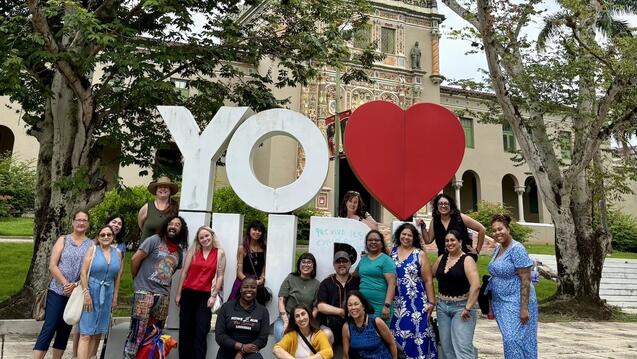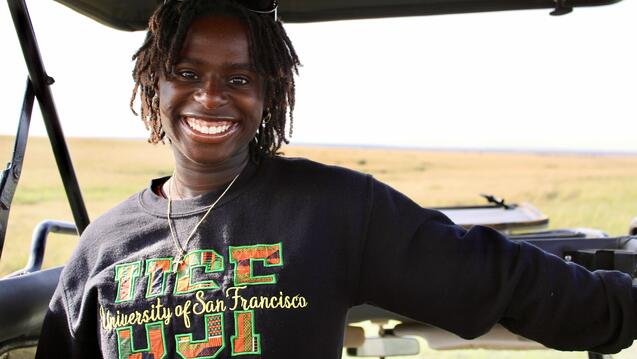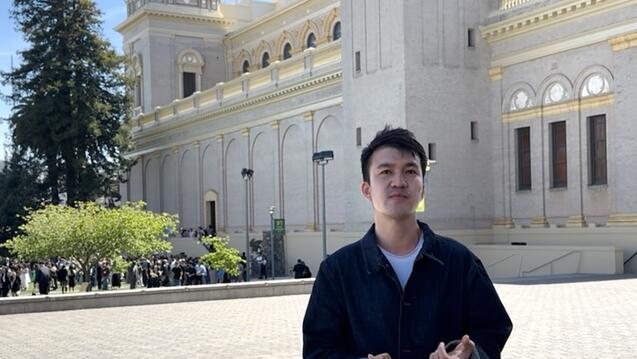Bringing Human Rights Education to U.S. Classrooms
What began as a class project for Dr. Susan Katz’s International and Multicultural Education graduate students is now a published book impacting public dialogue about human rights education.
In 2007, Dr. Katz, Professor in the USF International and Multicultural Education Department, piloted a new graduate course in human rights education. For the final project of this class, she asked her students to design curriculum for a school or community setting that examines issues through a human rights lens. Andrea McEvoy Spero, a doctoral student in the class at the time, created a high school curriculum unit that reframed the U.S. Civil Rights Movement as a human rights movement. The lessons led students to examine the events of the Civil Rights Movement pertaining to economic, cultural and civil rights. Drawing parallels between events in the United States and international events, the unit displayed the U.S. Civil Rights Movement as a much larger global human rights movement.
Spero’s exceptional work, and that of the other students in the class, got Katz thinking. What would it look like to share these curriculum projects with the public? How could students in USF’s International and Multicultural Education Department equip and empower other teachers to incorporate a human rights lens into their classrooms?
After finishing her Ed.D. with a concentration in Human Rights Education at USF, Spero reunited with Katz to address these questions. In May 2012, they began working on a book, and in April 2015, their book, Bringing Human Rights Education to US Classrooms: Exemplary Models from Elementary Grades to University, was published.
The book, edited by Katz and Spero, presents ten curriculum units addressing human rights topics. The instructors, all IME students or alumni, contributed narratives that address how the topic was chosen, how the unit was designed for their particular student population, and how the students responded. “I think what’s unique about the book is that these aren’t just lessons in abstract,” Spero explains. “These units have been taught. The instructors provided honest reflections on how they overcame hurdles in teaching with a human rights lens, or how they are still struggling to overcome them.” Adds Katz, “The book is also unique in that it purposefully incorporates the study of human rights in a U.S. context. Often curriculum taught in the U.S. about human rights look outside the U.S. Our book pays special attention to human rights issues within the U.S.”
Katz and Spero were intentional about choosing curriculum units from a variety of different grade levels and subject areas. The final version of the book includes units appropriate for elementary through university classrooms in a variety of different subjects, including science and leadership. “There is an urgency in teaching with a human rights perspective at all levels and subjects – and we provide strategies and support to do this,” explains Spero. “Human dignity is at the core of human rights. We are not always focusing on the violations. Human rights education is really about building a community of human dignity. When we think about the early grades, we look at ways to create a community of respecting one another.”
But this is not simply a book of curriculum units to teach. Several chapters provide theoretical and personal perspectives of human rights education. The Foreword is by long-time human rights activist Olga Talamante, while activist-scholar K. Wayne Yang speaks about the decolonization of human rights education in the Afterword. Human rights educator Felisa Tibbitts provides an overview of human rights education in the U.S. Katz and Spero discuss the triumphs and challenges of teaching human rights in the U.S., while also describing the development of USF’s Human Rights Education graduate program - the first of its kind in the U.S. These chapters, along with the pedagogical units, show the potential of human rights education in the U.S. “My hope is that the book gives a sense of solidarity and strength to teachers - that [teaching human rights] can be done and that you’re not alone,” explains Spero.
The book is already receiving accolades for its practical and thoughtful approach to supporting human rights educators, particularly for the ways it equips teachers to help students develop understanding and connection with the global community. “This volume offers a unique and powerful approach to global education in the twenty-first century, one that promotes a concern with human rights over a logic of capital accumulation and economic survival. What an important message of possibility—that the mastery of content and skills take place in the context of developing intercultural understanding and advocating for equity, access and justice,” says Ernest Morrell, Macy Professor of Education, Columbia University.
From one course assignment grew a community project demonstrating the impact that a graduate program can have when students and faculty act in solidarity with one another. Further, the book illustrates the collaborative culture the International and Multicultural Education Department works to build – one of mutual support and commitment. Spero describes this culture as she reflects on her experience as Dr. Katz’s colleague. “Susan [Katz] is a champion of student work. She was inspired to do this project to share student work – to highlight student thought.”
On May 17, 2015, the International and Multicultural Education Department came together with faculty, staff, students and alumni to celebrate the department’s 40thanniversary. The event was a time to re-connect and celebrate the many outstanding accomplishments of the IME community. See pictures from the event »


